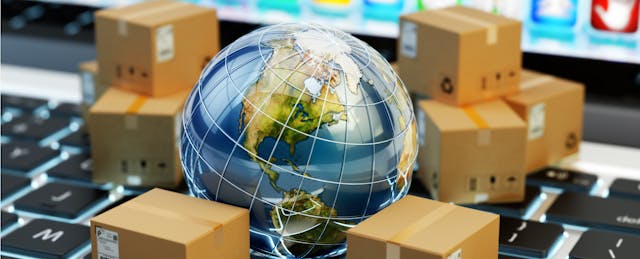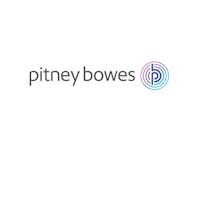Institutions of higher learning are known for their commitment to longstanding traditions. In fact, many colleges and universities stake their reputations upon this very idea. Yet, there are times when holding fast to systemic traditions can make an institution outdated or inefficient.
Stephanie Benedetto, Director, Product Marketing, SaaS Shipping and Receiving Solutions at Pitney Bowes, argues that prospective students need to see a willingness on the part of colleges and universities to face the future. And that means embracing smart technology, both for learning opportunities and the everyday concerns of life on campus. Although most campuses around the country are empty right now, Pitney Bowes wants to ensure that schools are ready to meet the needs of students and faculty the moment they return.
We spoke with Benedetto about a little-known pain point in higher ed—the overwhelming impact of e-commerce on campus mailrooms—and how her team is working to address the concern.
EdSurge: Can you tell us a bit about the practical problems that intelligent lockers are solving for higher ed institutions?
Benedetto: Most campus mail centers are very small. They were built years ago when e-commerce wasn’t even in existence. Now, colleges and universities—much like corporations and government agencies—are seeing the inbound volume of packages surge into their mail centers, driven by e-commerce.
We buy many things online today. So, it benefits the mail center to change behavior, change how they are delivering packages and mail to their students and even faculty—turn package and mail pickup into a positive experience. According to our Shipping Index, package volume grew by 17 percent between 2017 and 2018, and it’s consistently rising year over year. This proves out that package shipping volume is not going to slow down.
In the corporate world, many people choose to have their packages delivered to their workplace instead of their homes. With students, because they're on campus—it's where they live—they have all of their packages shipped to them at school. The mail center workers are daunted by a volume that they've never seen in the past. A lot of them don't have the real estate to place packages and wait for the students to come pick them up when they want to.
Our intelligent lockers offer another delivery point. You receive a package or mail. You scan it in. You deliver it to the locker. And it's out of your mailroom. It's freeing up space for new deliveries and keeping your mailroom better organized and safer for employees.
Besides that, you're offering more services and flexibility to students and staff. You're able to notify them that their package was delivered, and they can pick it up at their convenience. Lockers also provide contactless delivery and pickup. That's another benefit, so to speak—there's no human interaction for both the recipient and the mailroom employee. When you integrate an intelligent locker with inbound receiving software, the two pieces communicate together. That inbound package software solution acts as a database and tracks all received packages or mail through final pickup. It’s a closed-looped process.
To learn more about Intelligent Locker systems, visit Pitney Bowes and download The New Parcel Management eBook: Higher Ed Edition.
These seem like great solutions to some of the challenges of the physical environment, but what happens when students aren’t on campus regularly?
We actually saw this with the USPS dealing with the coronavirus—schools were still receiving packages and mail. So, what were they going to do? We told the schools, if they know a student lives close and can come pick it up, put it in a locker. But if the student isn't nearby, we suggested they ship the package to the student’s home. That's an easy job for an outbound shipping system.
But that’s only one part of the equation. Recently, one of our schools needed to distribute laptops to some of the teachers and faculty who are working from home. So, they used the lockers, basically saying, "Look, if we put packages in here, we can put anything in here. You just notify the recipients and say, ‘Come pick up your laptop, and you can work at home.’"
In this type of scenario, schools can use inbound receiving software, such as SendSuite Tracking Online, to manage assets. It's not just about receiving packages. The asset management feature is similar to how a library card system works. You know what's checked out and checked in. With the laptop situation I mentioned before, they know what was checked out. You know who has it, when it was used last and then when it was returned. You just have to be creative with it.
A locker is just another contactless delivery and pickup point where, no matter what situation hits—you have to evacuate or what have you—goods can still get to your recipient. Think about it as a mailbox but with intelligence, meaning software.
What makes this the right moment for schools to invest in intelligent lockers?
Campuses are quiet now, so it’s actually the perfect time to prepare for students' return. From what we know, some colleges and universities will open campuses this fall and others some time in 2021. Being ready with a contactless delivery and pickup solution that takes health, safety and social distancing into account will help schools hit the ground running when packages start pouring into mail centers.
Since we're used to getting everything within a few days after clicking the “buy” button on our favorite shopping sites, or tracking a care package from home, if it's not delivered when promised, we get disappointed—and we wait impatiently. The locker, when combined with inbound receiving software helps get packages to students and faculty a lot faster and improves the customer experience.
Many colleges and universities are still jotting down package information with pen and paper—not only the number of packages they receive daily, but when each was received, who it’s for, when it was picked up and signed for. There are software solutions to help mail centers process packages much more efficiently. The details they were writing down are in the barcode. Now, with a simple scan, they can receive it, process it, bring it straight to a locker and notify the recipient it’s available to pick up. Using inbound receiving software is a lot faster than writing it down; plus it accounts for all packages and mail through final pickup.
And students or faculty can pick it up on their time. They like the convenience and the notifications they get on their phone that their package is ready to be picked up. Now, they're able to plan their day. "Oh, it was delivered. Okay. I'll be on campus at 2pm, so I'll go swing by the locker." They don't have to wait in long lines anymore. The locker lets you do that, with contactless delivery and 24/7 contactless package pickup. And lockers are a secure place for packages to be kept; they have surveillance. So, theft is no longer a concern.
Committing to a locker and inbound receiving solution helps a college or university position itself well to parents, students, faculty and even donors. They’re investing some of their resources in the right direction. For students, part of the college experience is living away from home, gaining independence and building a life in their new college community. Having modern technology and the convenience it offers helps bridge the gap between home and their new living arrangements. It says, “We are in the 21st century. We have sophisticated technology for you to get your packages. They're not going to be lost. They are going to be secure.”



